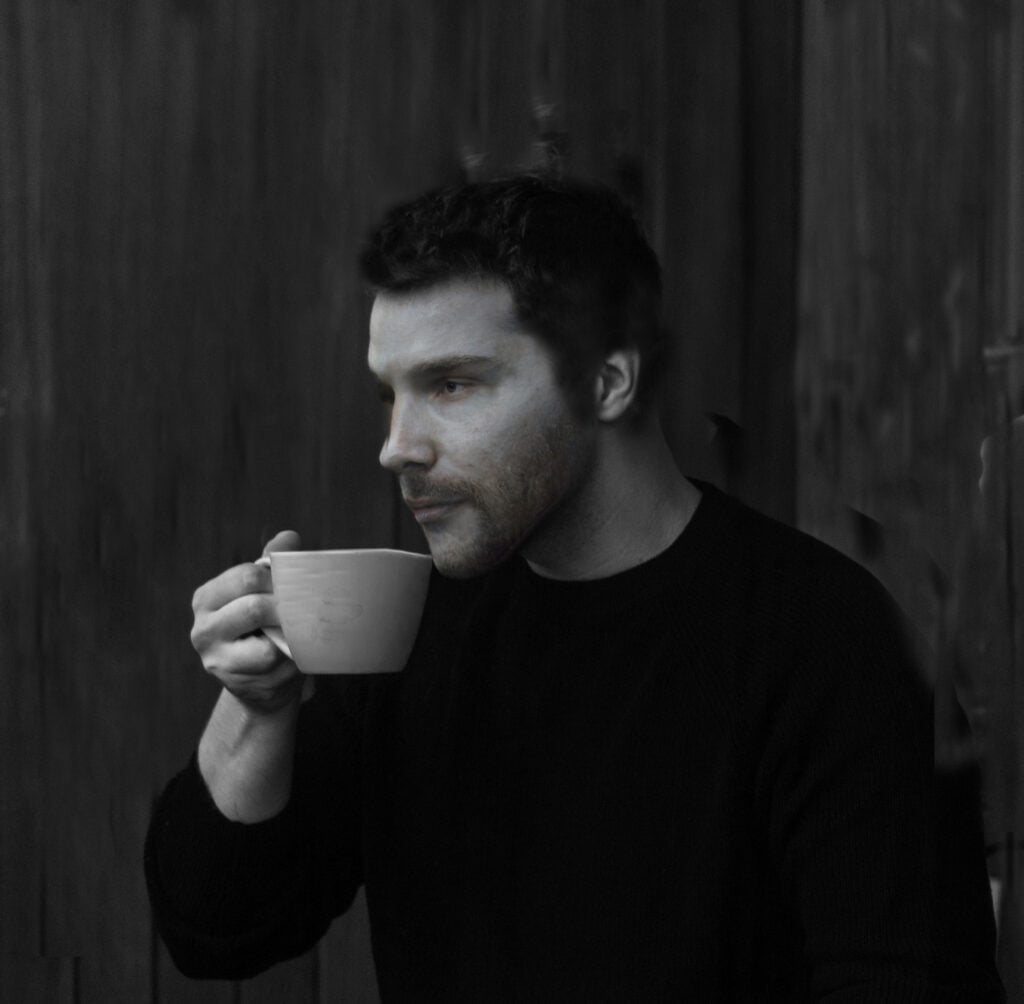The first coffee machine was invented in the 19th century. Coffee has been brewed and consumed for centuries, with its origins dating back to the 6th century. Before the invention of modern machines, coffee was brewed by manual methods like boiling the grounds in water over a fire.
Coffee machines were basically invented to speed up the brewing process, to pressurize the water, and to make the taste of the drink better.
Today, we have fully automatic coffee machines. You can quickly get a cup of coffee from these machines with only one touch.
In this article, I will discuss the history of coffee machines and explain when and how they came into existence.
The History of Coffee Makers
In the early days, People brewed coffee by putting coffee grounds in a pot of boiling water, but over centuries innovative machines were designed to automate and improve the process.
Here’s a quick timeline of Coffee makers
| Coffee Maker | Year |
|---|---|
| Manual Percolators Coffee brewing device | Late 19th century |
| Angelo Moriondo invented the boiler coffee machine | 1880s |
| Luigio Bazzerra made modifications to Moriondo’s design that look much similar to modern Espresso machines | 1901 |
| Desiderio Pavoni patented Bazzerra’s design and introduced the pressure-relief mechanism | 1903 |
| Filter Coffee maker invented by Melitta Bentz | 1909 |
| Attilio Calimani designed the Immersion French Press Coffee maker | 1929 |
| Alfonso Bialetti invented the Stovetop Moka Pot Coffee maker | 1933 |
| Achille Gaggia invented the first the High Pressure Espresso machines | 1938 |
| Automatic Drip Coffee makers become popular in Americas | 1970s |
| Nestle introduced the pod-based Nespresso system | 1990s |
| Keurig introduced pod-based brewing system | 1998 |
| Alan Adler introduced the Aeropress: an innovative manual immersion brewing method | 2005 |
Percolators (The First Coffee Maker)
The percolator was one of the earliest automated coffee brewing devices, preceding modern machines. Percolators gained popularity in late 19th-century America and Europe as an easy way to brew coffee.
Percolators featured a simple design—a pot with a chamber to hold ground coffee, placed over a heat source. Water would boil and rise through a tube, where it would then contact with the coffee grounds, creating a cycle of brewing.
Although percolators lacked the precision and finesse of today’s coffee machines, they represented a significant step in the journey of coffee-making technology.
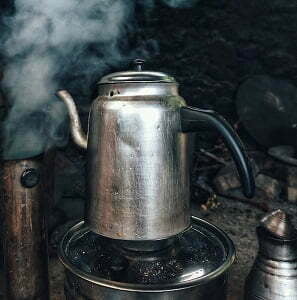
Who Invented the first Filter Coffee Maker? (The Pour Overs)
Melitta Bentz, a German housewife, is credited with inventing one of the most iconic coffee makers in history.
Melitta Bentz was not very happy with the bitter taste of the coffee and the sediments she got with Percolators or traditional manual brewing methods. So, she started experimenting with new ways to brew a cup of coffee.
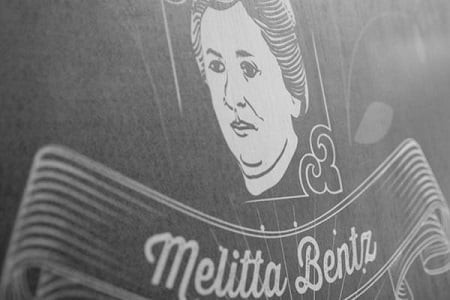
In 1908, Bentz created a simple brewing device using blotting paper and a brass pot to produce disposable filters that kept grounds out of the brewed coffee.
When pouring hot water over the grounds, she saw a remarkable transformation. The water seeped through the paper, extracting the rich flavors of the coffee while leaving behind the bitter sediments.
Recognizing the potential of her invention, Melitta founded her own company, Melitta Bentz Group, in 1909. She began producing and selling her innovative coffee filters, which quickly gained popularity.
Her invention formed the genesis for pour-over brewers, which are still popular today. The conical Melitta brewing systems remain a fixture of kitchens worldwide more than a century later.

The Invention of the French Press Coffee Maker
The French Press, also known as a Coffee Press or Coffee Plunger, was invented in its modern form by Italian designer Attilio Calimani in 1929.
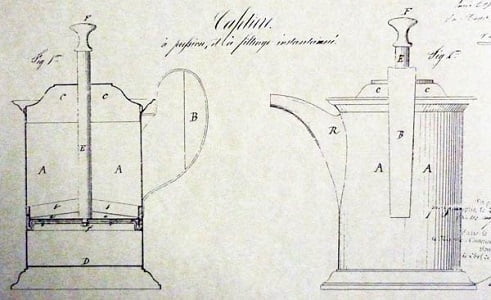
However, the concept of steeping ground coffee in hot water dates back much earlier to France in the late 19th century.
The Bodum company started making French presses in the 1950s, spreading the design beyond Italy.
The French Press as we know it today, with a cylindrical glass or stainless steel Jar and a plunger with a metal mesh filter, gained popularity in the mid-20th century.
It has since become one of the most beloved brewing methods for brewing coffee due to its simplicity and ability to produce rich and full-bodied coffee.
The Invention of Moka Pot
Italian engineer Alfonso Bialetti invented the Moka pot in 1933.
The Moka pot quickly became popular in Italy and has since become an iconic coffee maker known for its ability to brew strong and rich coffee.
With the Moka pot, people could brew strong coffee at home using steam to push hot water through the grounds. This replicated the pressure brewing used in early espresso machines.
It remains a popular and enduring coffee brewing method to this day.
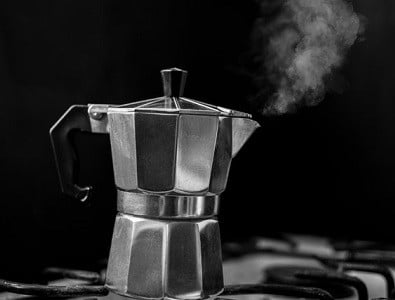
The History of Espresso Coffee Machines
In the early times, coffee brewing was a very long process, and people had to wait for a long time to get their caffeine fix.
There was a necessity for a machine that could reduce the time taken by the brewing process and produce coffee on a large scale.
As the saying goes “Necessity is the mother of invention.” So people tried to design a faster brewing process.
Angelo Moriondo’s Invention
Angelo Moriondo was the first man who patented the first Espresso-type coffee machine in the 1880s.
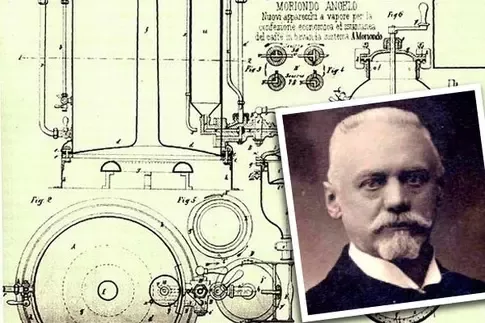
It was equipped with two large boilers that produced steam at a pressure of 1.5 to 2 bars. The steam was then passed through a bed of coffee grounds to complete the brewing process.
This machine was capable of brewing a cup of coffee in a matter of a few minutes. However, it did not have any proper filter, so there were always coffee granules present in the coffee, and the taste of coffee prepared by this machine was very bitter.
Luigio Bazzerra Modifications
In 1901, Luigi Bezzerra made improvements in the design of Angelo’s machine and patented it. Many features of this machine, like portafilter, are still in use in modern Espresso machines.
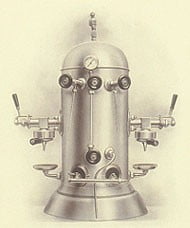
The main flaw in the design of Bazzerra’s invention was that it was heated over a flame, so it was nearly impossible to control the temperature and pressure. As a result, the taste of the Espresso was very inconsistent.
As we know, consistency is a key attribute of Espresso. That’s why this machine was not very much appreciated in the market.
Desiderio Pavoni Improvements
In 1903, Desiderio Pavoni bought the patent for Bezzerra’s machine and made several improvements to it. He introduced pressure relief valves in it to control the pressure. He also introduced the steam wand to collect the built-up steam in the boiler’s chamber.
These early coffee makers solved the problem of the slow brewing process of coffee beans. But the taste from these machines was usually burnt and very bitter as these machines rely solely on steam.
Furthermore, these machines are capable of generating pressure only up to 2 bars. So, the coffee drinks from these machines were not eligible to be classified as Espresso according to the modern definition.
Achille Gaggia First Modern Espresso machine
In 1938, Achille Gaggia was the man who finally surpassed the pressure of two bars and created an Espresso machine capable of creating pressure of up to nine to ten bars.
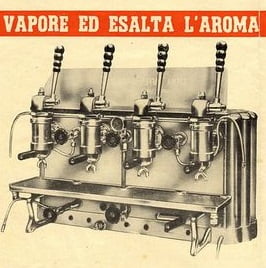
He used the spring piston lever in his design which minimized the need for large boilers and significantly increased the pressure of water.
Because of the increase in pressure, a dense caramel-colored layer called crema was formed on the top of the Espresso. To date, this crema is the essence of Espresso.
And after that many innovations were made in the design, and now fully automated Espresso machines are present. In these machines, pressure is generated by electrically driven motors, and water is also heated with electricity.
The evolution of Modern Coffee Makers
Automatic Drip Coffee Makers
The automatic drip coffee maker evolved throughout the 20th century to become the universal morning brewer found in kitchens today.
The first Electric Drip Coffee Maker was patented by the Swiss manufacturer Gottlob Widmann in 1953. Home drip brewing grew in popularity through the 60s and 70s with wider availability of electric power.
However, the drip coffee maker was truly revolutionized and normalized by the Mr. Coffee company. Their affordable and easy-to-use machines became a staple of American households in the 1970s.
Drip machines have continued advancing with additions like programmable timers, customizable settings, built-in frother and grinders, and higher heat to unlock fuller flavor.
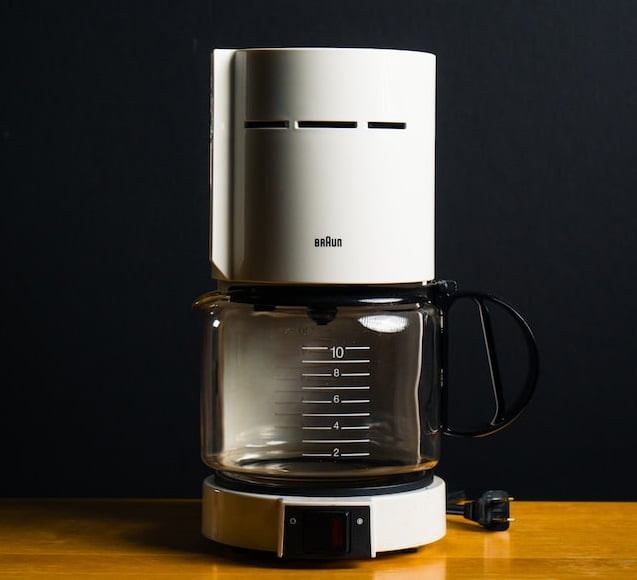
Pod Based Coffee Maker
Pod-based single-serve coffee machines evolved as a convenient, mess-free alternative to traditional automatic coffee makers.
The origin of coffee pods can be traced back to the mid-20th century when Swiss engineer Eric Favre developed the initial concept of a single-serving coffee capsule.
Nestlé’s Nespresso system, introduced in the late 1980s and early 1990s, played a pivotal role in popularizing coffee pods.
In the early 2000s, Keurig introduced its own pod-based brewing system in the United States, marking a significant milestone in the history of coffee makers.
The Keurig machines, complemented by an extensive selection of K-Cup pods, rapidly became a fixture in households across the nation.
However, the convenience of coffee pods came with an environmental cost, primarily due to the prevalence of single-use plastic pods. As environmental awareness grew, many companies responded by introducing recyclable or compostable pods to mitigate their ecological impact.
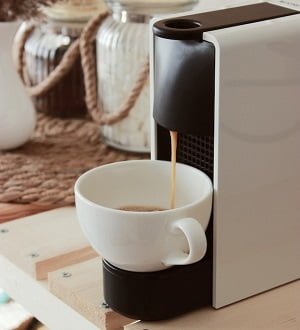
AeroPress
The AeroPress is a relatively new coffee maker that was invented in 2005 and represents an innovative manual immersion brewing method.
The device was invented by aerospace engineer Alan Adler who was looking for an easier way to brew a cafe-quality cup of coffee easily and manually.
Its ease of use, quick brewing time, and portability make it a favorite for those seeking a consistent and clean cup of coffee, especially when traveling or camping.

The Future of Coffee Makers
Coffee makers will continue evolving to deliver specialty drinks, automation, and customization through advances like artificial intelligence and app connectivity.
Mainstream machines already incorporate automated features like grinders and milk frothers. But smart technology and personalization will define the next generation.
Smart sensors and machine learning will enable upcoming coffee makers to identify preferences and automatically adjust volume, strength, and more to individual tastes.
Users can schedule brew times, select drinks through their phones, and remotely trigger the machine.
Sustainability will also be a focus with recyclable pods and reduced waste.
Final thoughts
As we’ve explored, how has the coffee maker changed over time, the innovations reflect a centuries-long quest to better unlock and harness the full flavors of coffee.
Where once coffee was crudely boiled, people now have access to everything from handcrafted pour-overs to push-button espressos at home.
Each new invention is built upon previous methods to get closer to convenience, consistency, and control.
The journey towards ever more refined coffee experiences pushes new frontiers like sustainable capsules and intelligent brewing.
Other Interesting Articles:

